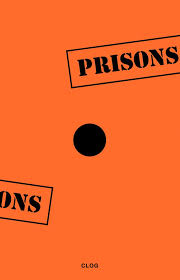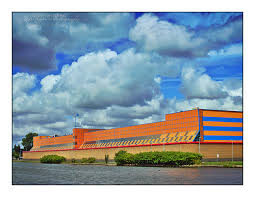As lawyers, busy with our files, hunched over case law, we seldom stop to think about the other disciplines connected to our world. Sure we think about other areas if we have a specific reason too. As evidenced by the Goudge Report, which cautions lawyers to take a deeper view of expert evidence particularly medical evidence, other worlds do collide in the courtroom. But, what we really fail to consider is the construction of our legal world: who builds it and how.
In a previous blog, I wrote about the courtroom as a bounded space and what that means in terms of public perception and how we, as lawyers, bridge that spatial divide. In this posting, I want to take that built space further and talk about the built space of confinement – prisons.
This subject matter came to me through familial connections – my son is studying architecture and he has shared with me many an interesting article. CLOG, a thematic architectural digest, recently released the CLOG: PRISONS edition. It’s an immensely interesting read and I encourage you to go straight to your nearest bookstore and purchase it or purchase online here.

You can’t miss the book – it’s dressed in bright orange – for two reasons: orange is the ubiquitous colour of many remand jumpsuits (as in orange is the new black) and it also happens to be the primary colour, along with bright blue, of the Schie Penitentiary in Rotterdam (as in orange is The Netherlands national colour – think William of).

Instead of merging into the background, as the Metropolitan Correctional Centres do in Chicago, New York, and San Diego through their stylistic skyscraper image, the Rotterdam jail rushes out to say “we are here.”

Also present is the necessary bike path to the entrance. However, what works for the outside is not necessarily what works for the inside: jails will always serve two communities, the public, who desire the separation, and the offenders who loathe it. Once, the interior of the Schie facility shone out as well with exuberantly coloured walls – a cross between a Matisse painting and a Keith Haring jig – but after prisoners’ protests, the walls were re-painted a calming grey – prison grey to be exact. So much for the hipster imagined prisons.
Arrestingly, CLOG opens with Editor Jacob Reidel’s smart piece on prison barges with a fascinating look at the historical significance of the prison afloat. He starts with the newest version found in NYC at the Vernon C. Bain Correctional Centre (VCBC), an 800 person jail barge, which is part corrections and part navy, a throwback to the galley prisoner, who could choose death or a life of fortitude aboard Europe’s most magnificent battle ships.

Insightfully, Reidel ends his piece with these words:
The prison ship therefore perfectly exposes the tenuous relationship between prisons and what is most valued in architecture. If 200 years ago buildings assumed a role once left to ships, the VCBC’s resumption of the role exposes the sad failure to improve the purpose and architectural reality of incarceration. Like the stacked container ships the VCBC resembles, the modern prison remains a space for storage and removal.
The containment theme is continued in the article on solitary confinement by Aaron White and how the building of the first such prototype jail, Pennsylvania’s Western State Penitentiary, conceived by architect William Strickland in 1818, became the first design to describe the punishment as well. It was demolished in 1833 as an obsolete structure of faux experimental social policy.
Interestingly, Strickland also designed the idyllic United States Naval Asylum. It is of course the ideal, which Strickland and others were attempting in the 1800s based upon the ideal form of justice, theorized and designed in the late 1700s by non-architect social theorist, known to all lawyers, Jeremy Bentham. Bentham’s Panopticon, the penultimate design for social control would be the model of reform into and past the Victorian era. Bentham’s vision, where the ideal and the idyllic live in constructions in the clouds, is succinctly felt in The Panopticon Writings:
Morals reformed - health preserved - industry invigorated, instruction diffused - public burthens lightened - Economy seated, as it were, upon a rock - the gordian knot of the Poor-Laws are not cut, but untied - all by a simple idea in Architecture!
CLOG: PRISONS gives us a mere visual clip of the features of erecting space: the social policy driving the design, such as the Egyptian theme of John Haviland’s New Jersey State Prison in Trenton and the moral dimensions of designing Guantanamo Bay. I would therefore add Clog’s Prisons to my earlier list of essential criminal lawyer’s reads. If we are part of the system, which sends people to prison then we have an obligation to understand what that means.